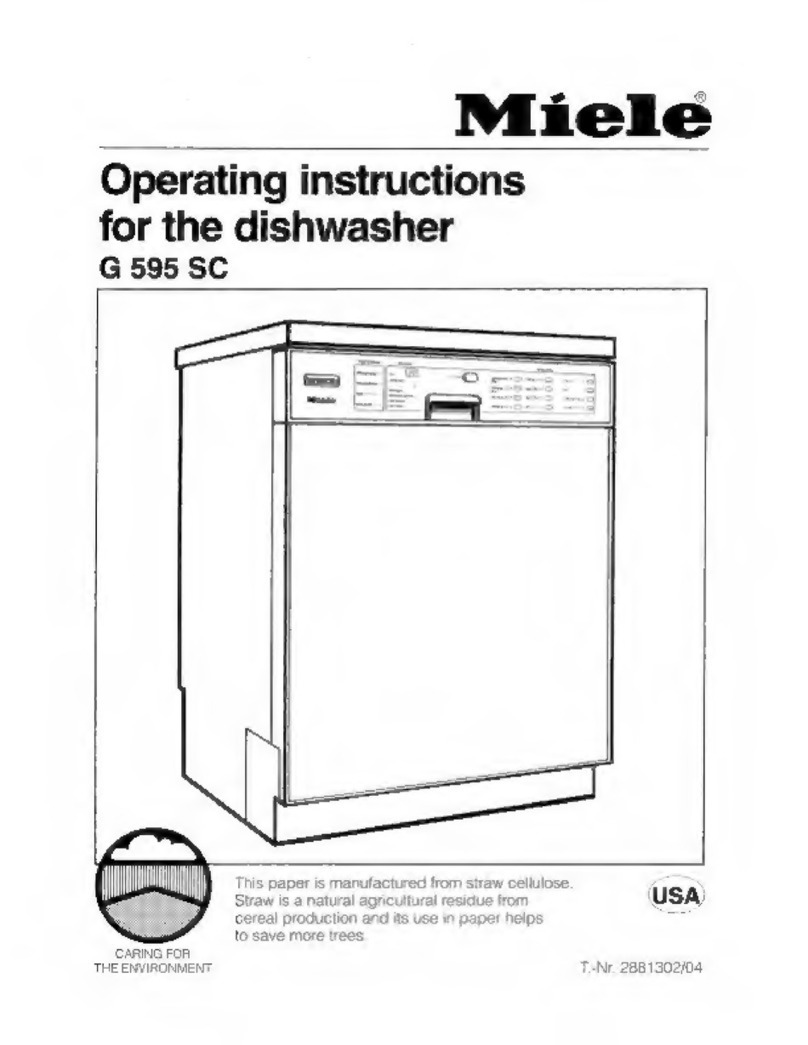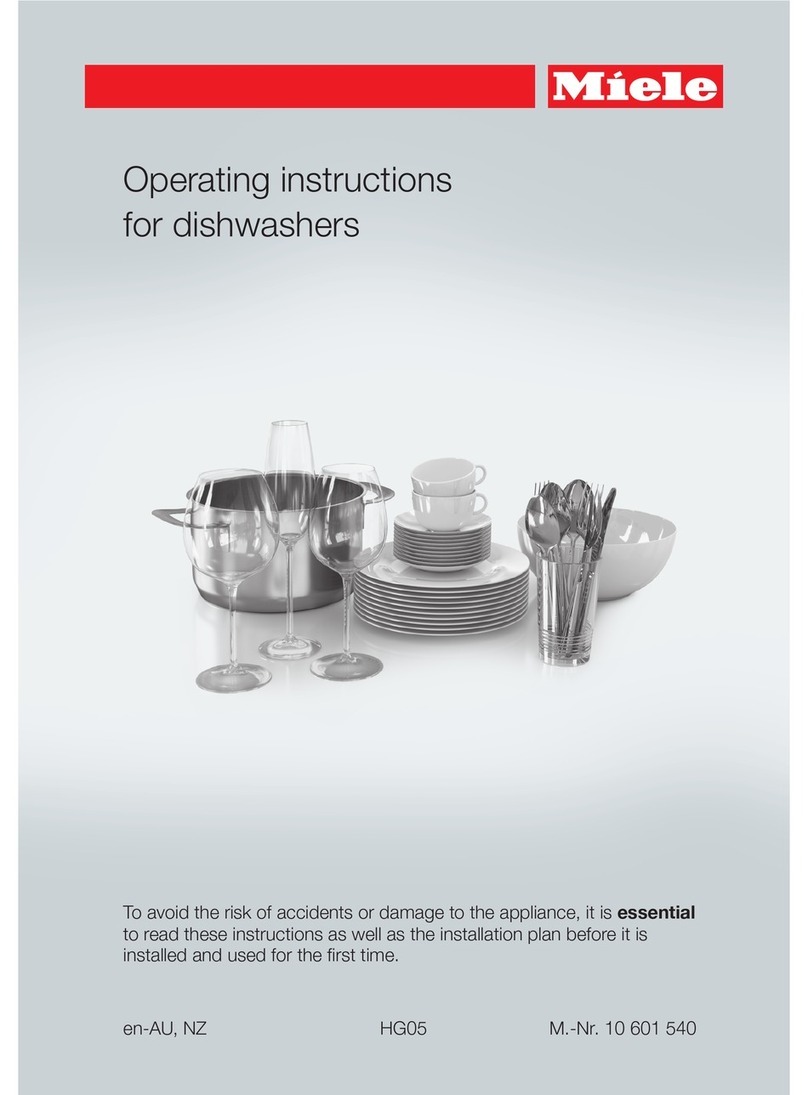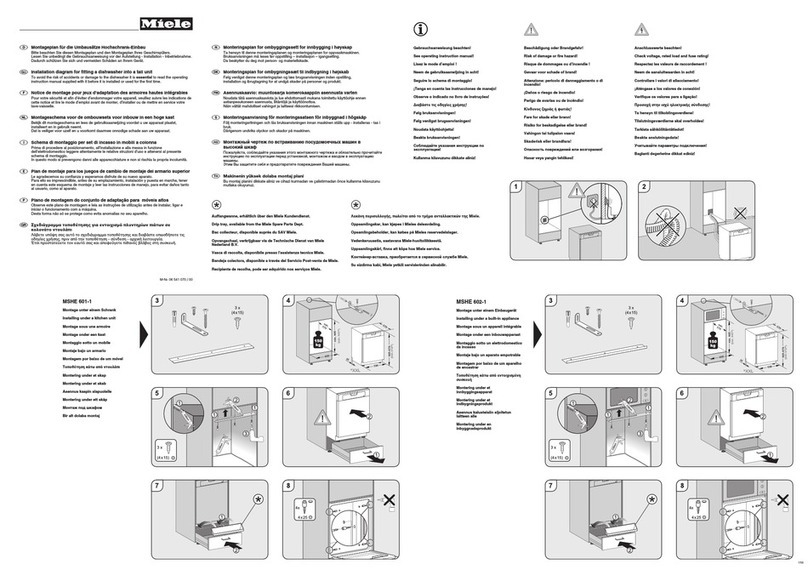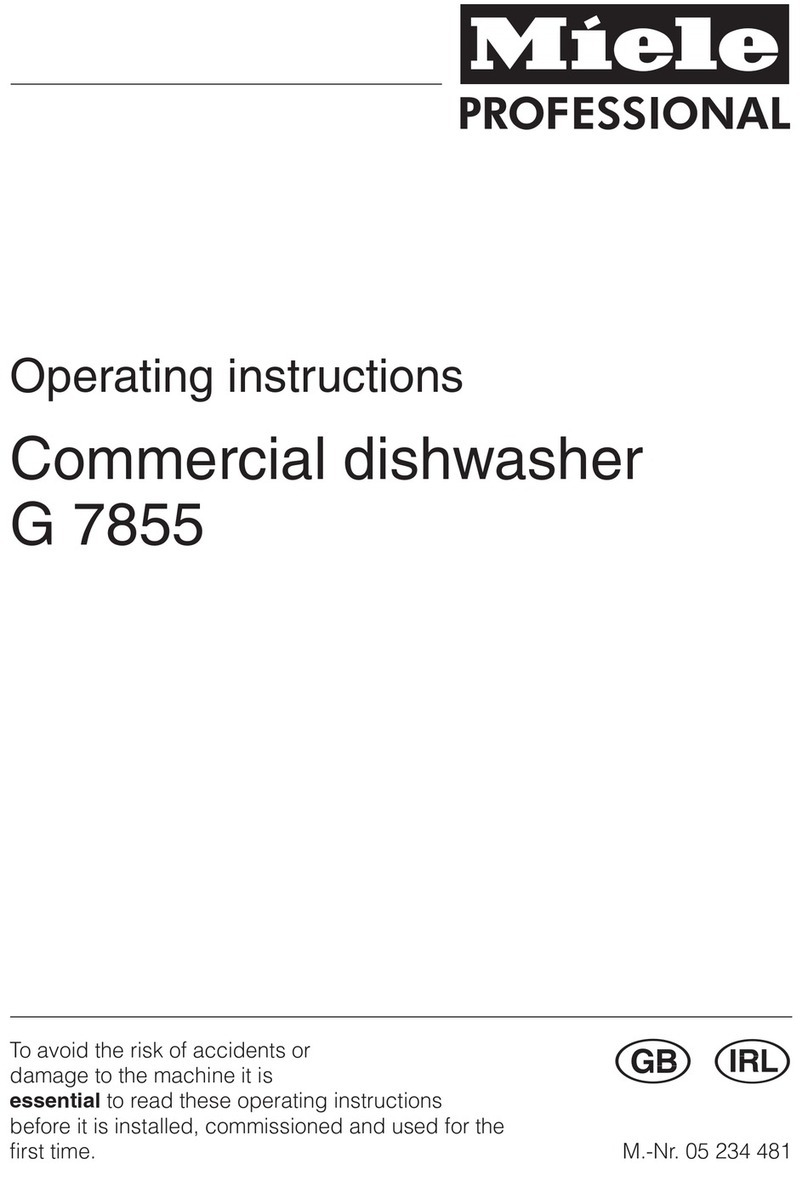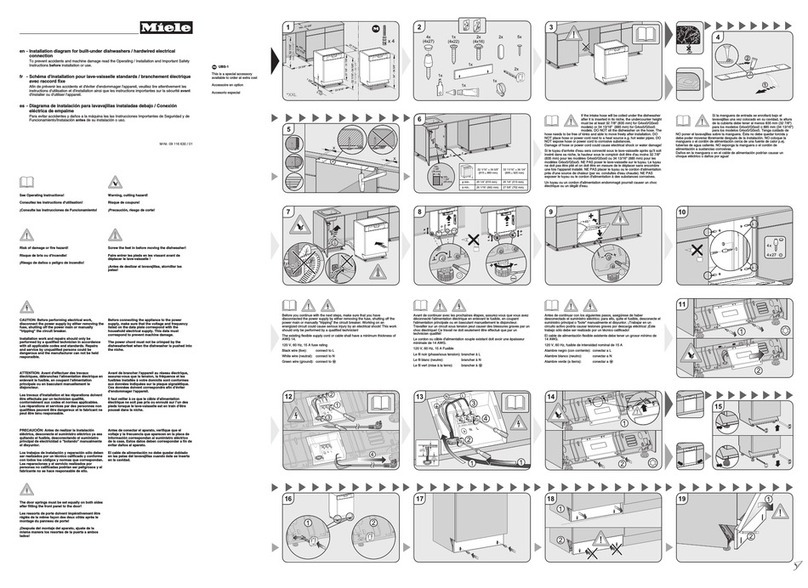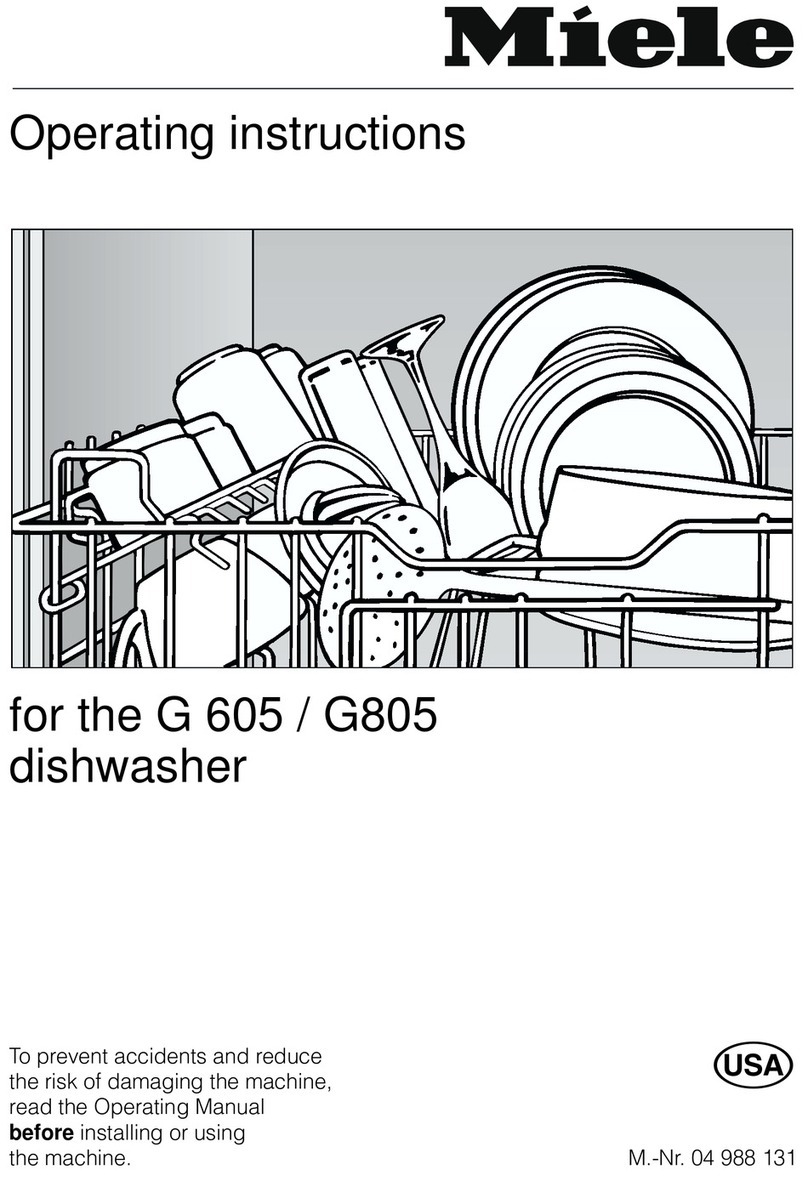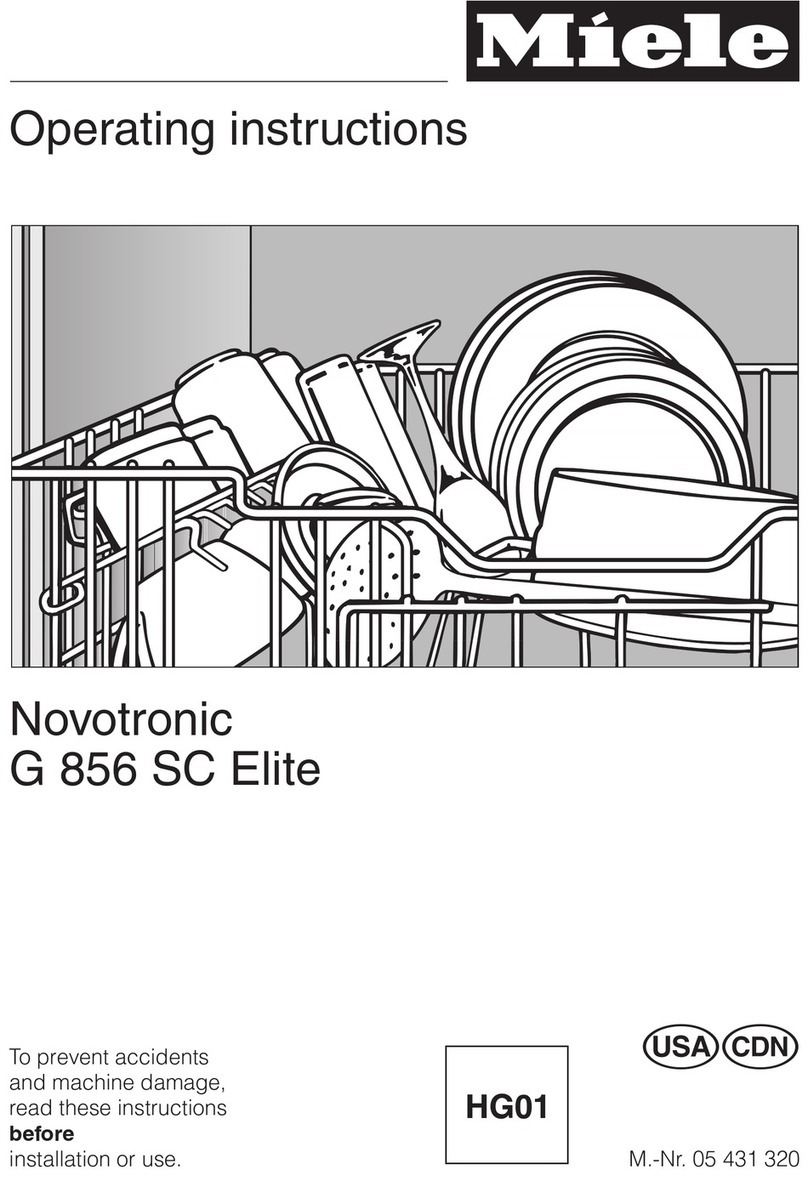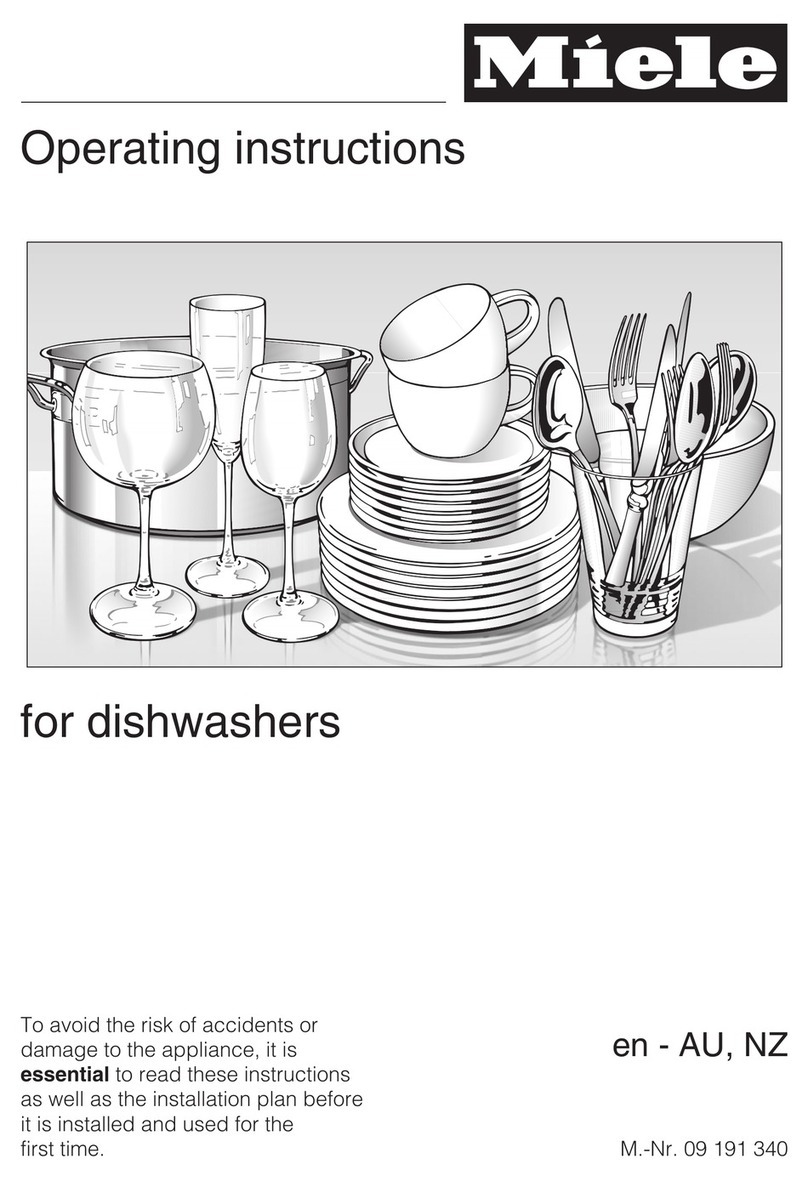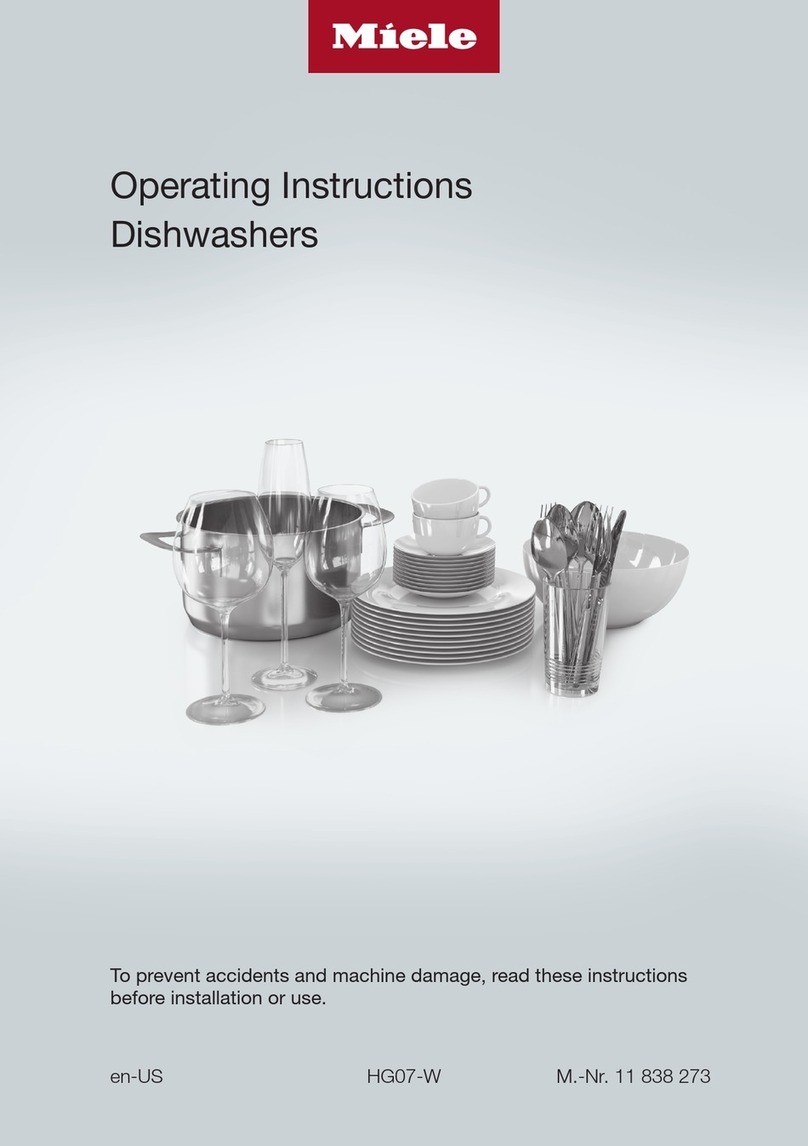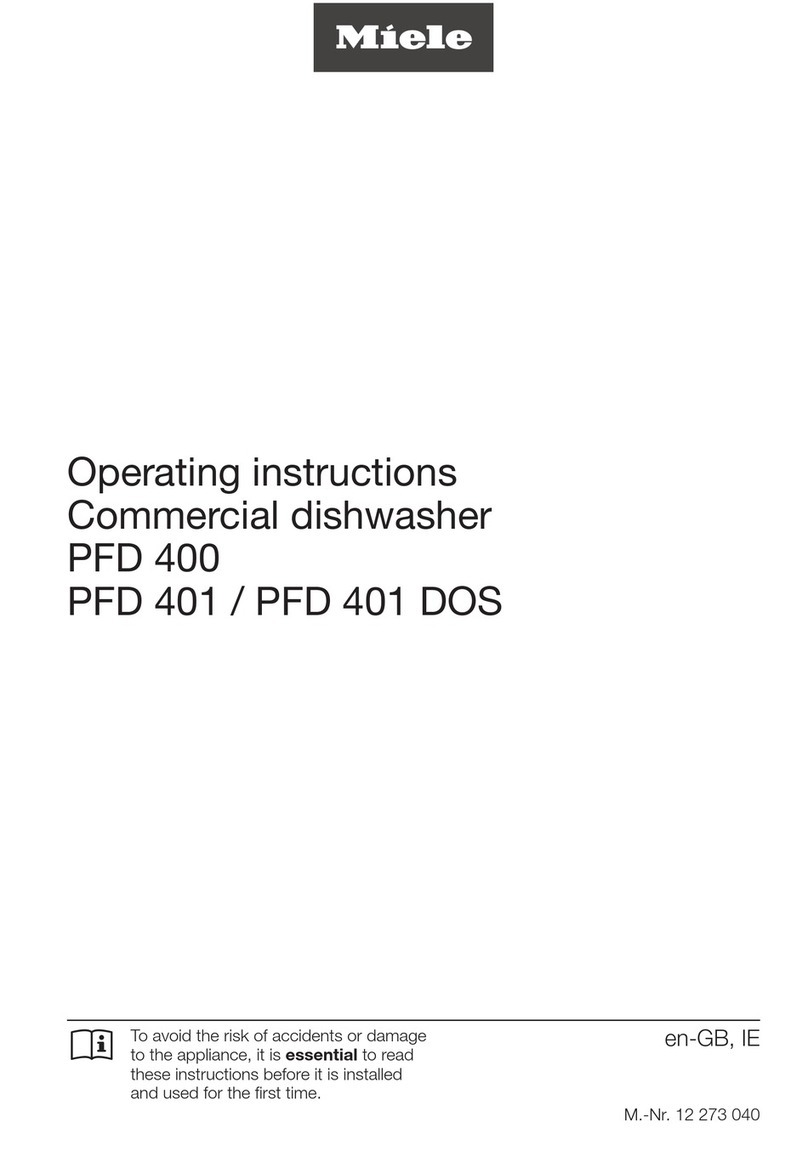
In critical applications where very
stringent requirements have to be
met, it is strongly recommended that all
the relevant factors for the process,
such as cleaning agent, quality of
water are discussed with the Miele Ap-
plication Technology specialists.
If the cleaning result is subject to
these particularly stringent require-
ments (e.g. chemical analysis, spe-
cialised processes), a regular quality
control test should be carried out by
the user to ensure that required stand-
ards of cleanliness are being achieved.
Use special inserts in accordance
with the instructions provided.
Empty any containers or utensils
before arranging them in the ma-
chine.
Do not allow any remains of acids
or solvents, or chloride solutions to
get into the wash cabinet. Similarly
avoid any materials with a corrosive ef-
fect. The presence in compounds of
any solvents should be minimal, (espe-
cially those in hazard class A1).
Ensure that solutions or steam con-
taining acid salts do not come into
contact with the steel outer casing of
the machine, to avoid any corrosion
damage.
Follow both the installation instruc-
tions in this booklet, and also the
separate instructions with diagrams.
Accessories
The only accessories to be used
with the special commercial ma-
chine must be those supplied or ap-
proved by MIELE for the specific appli-
cation. Consult your dealer or the Miele
Professional department for advice.
Disposal of an old machine
When disposing of an old machine
first make it unusable. Disconnect,
cut off the cable and any plug from the
cable. For environmental and safety
reasons ensure the machine is com-
pletely drained of any residue water
and cleaning agent. (Observe safety
regulations and wear safety goggles
and gloves). Make the door lock inoper-
ative, so that children cannot acciden-
tally shut themselves in. The simplest
way to do this is to remove the locking
pin (2 cross-slotted screws above the
door). Make appropriate arrangements
for the safe disposal of the machine.
For tank system machines ensure that
any water is emptied out of the tank.
In countries where there are areas
which may be subject to infestation
by cockroaches or other vermin, pay
particular attention to keeping the ma-
chine and its surroundings in a clean
condition at all times. Any damage
which may be caused by cock-
roaches or other vermin will not be
covered by the machine guarantee.
The manufacturer cannot be held re-
sponsible for any damage caused
through non-observance of these
Warning and Safety instructions.
Warning and Safety instructions
7
